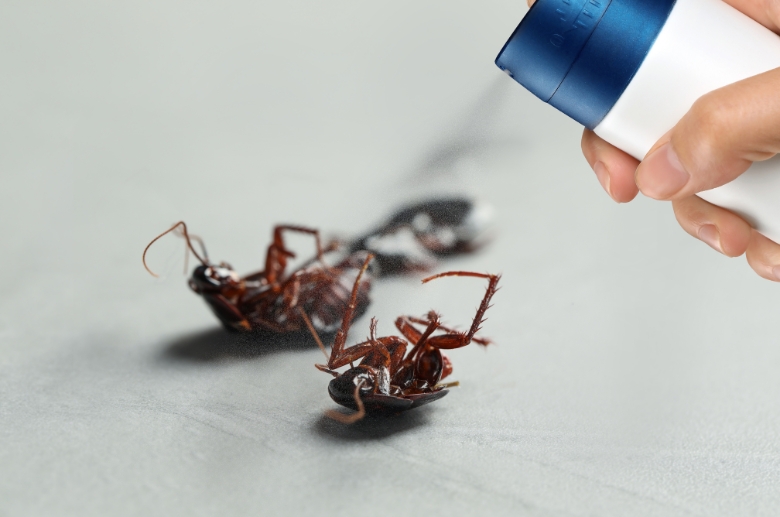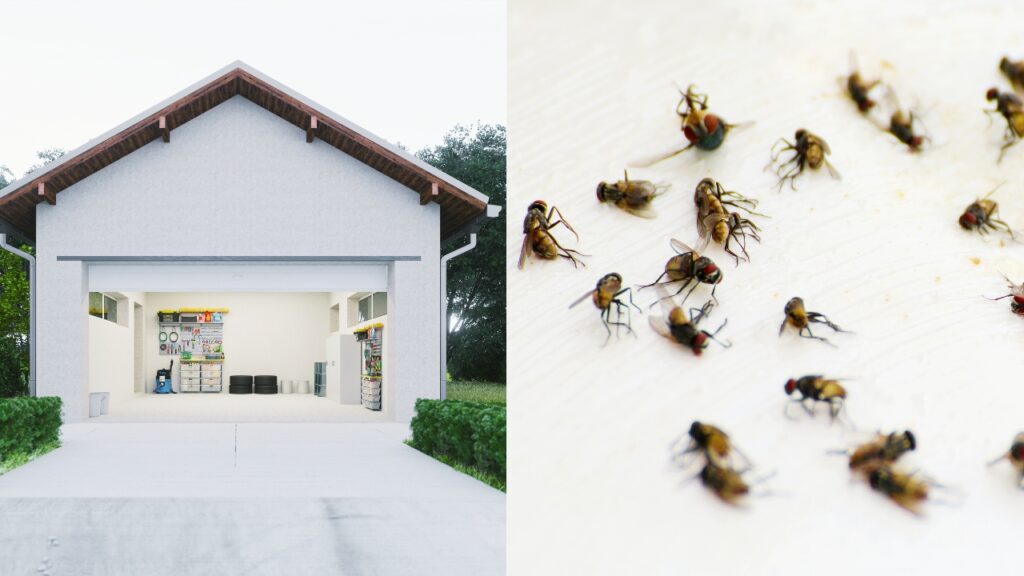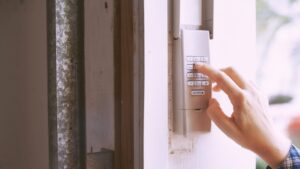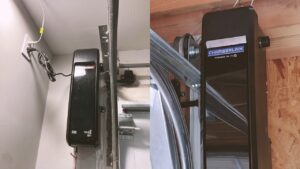Connect With A Garage Expert
Connect with local experts, Compare quotes, Get the best price.
If you’re frustrated with bugs invading your garage, you’re in the right place. This guide on “how to keep bugs out of the garage” will help you establish a bug-free environment through methods such as sealing entry points to implementing proactive pest control measures. we’ll provide you with the information and methods required to keep a bug-free garage for good.
Why Bugs Love Your Garage

Bugs are naturally drawn to your garage due to its sheltered environment, tempting odors, and potential water sources, making it an inviting habitat. Here are the most common reasons why bugs are attracted to your garage.
Shelter and Protection
Garages serve as inviting havens for insects due to their ability to maintain an ideal temperature ranging from 60-80°F for a significant portion, approximately 30%, of common bugs. This cozy microclimate shelters them from external threats, including predators, extreme cold, scorching heat, and harsh weather conditions.
The garage’s insulation and enclosed structure offer a secure refuge for insects seeking a stable environment to thrive, making it a sanctuary where they can flourish without the constant worry of environmental challenges.
Bugs Are Drawn To Smells Coming From Your Garage

Insects are naturally drawn to an array of enticing odors that emanate from your garage, making it an irresistible location for them to congregate. Two key types of smells play a role in this attraction:
- Firewood: Stored firewood’s scent attracts insects because it often contains natural odors and moisture that make it an appealing habitat for them, such as wood-boring beetles and termites, potentially causing infestations and damage to your garage. Proper storage away from the garage or sealed containers can deter these pests. Similarly, the presence of a possum in the garage can amplify these issues, as possums can bring in additional smells from their fur and what they carry, attracting even more insects.
- Decomposition and Moisture Odors: Decaying materials in garages, such as cardboard boxes and fallen leaves, produce odors that attract insects because they signal a potential source of food and shelter. The moisture and humidity can intensify these scents, drawing in bugs like flies and beetles to the possible sources of decay.
Water and Humidity
Garages also provide favorable conditions for bugs to breed and establish themselves, mainly due to the presence of water and humidity. This makes them potential breeding grounds for various insects since they need moisture for their eggs and larvae to develop their growth and reproduction. The factors contributing to this phenomenon include:
- Moisture from Leaks and Water Sources: Garages can have leaks or sources of moisture, such as pipes or appliances, which create damp environments ideal for mosquitoes to lay their eggs and for other insects to thrive.
- Dark Corners and Cluttered Spaces: Dark, cluttered corners in garages provide hidden and undisturbed areas for insects to nest and reproduce. Spiders, for instance, are drawn to such locations as they offer darkness and ample prey.
Bugs Love Food
One of the primary reasons bugs are attracted to your garage is the presence of accessible food sources. In particular, bugs are enticed by:
- Food Items Left Exposed: Leaving food items exposed or poorly sealed in your garage can attract a range of insects, including ants and bugs, in search of an accessible meal. For instance, bags of pet food or spilled grains can be examples of such attractants.
- Pet Food and Birdseed: The storage of pet food or birdseed in the garage can be a magnet for insects and rodents, as the scents and accessible food provide an irresistible feast for them.
- Spills and Garbage: Spills and accumulated garbage in the garage not only emit enticing odors but also offer a buffet for pests like rats, making your garage a haven for unwanted visitors.
How To Keep Bugs Out Of The Garage
Guarding your garage against pesky intruders is essential for maintaining a clean and pest-free space. Here are five proven tips to keep bugs out and protect your belongings.
Tip #1 – Remove Cardboard and Boxes
Cardboard attracts bugs for a couple of crucial reasons. The paper fibers and glue provide a food source for insects like silverfish and roaches. Cardboard also efficiently traps moisture, creating an ideal damp environment that many bugs seek out.
To discourage bug attraction, avoid using cardboard boxes for storage in your garage. Look for plastic bins, metal shelving, or wooden crates, as these materials are far less enticing for insects. Making this switch can help protect your belongings.
Proper cardboard disposal is also important to prevent infestations. Break down boxes, seal them in trash bags, and take them directly to recycling or trash pickup. Leaving cardboard sitting around the garage can unintentionally invite bugs inside. Following these tips will help minimize the appeal of your garage to insects.
Tip #2 -Organize Your Garage

Organizing your garage with shelves and proper storage solutions helps reduce hiding spots for bugs, keeping the space uninviting to insects.
- Decluttering: Organizing your garage includes using shelves and storage solutions and finding affordable items at the dollar store to keep your belongings off the floor and reduce hiding spots for bugs. Regularly declutter your garage to minimize potential bug habitats.
- Regular Sweeping and Cleaning: Frequent cleaning of the garage, paying attention to corners, the floor, and the ceiling, prevents the accumulation of debris that can attract bugs. This practice also helps you spot and address bug issues early.
- Proper Storage: Ensure food products are stored in airtight containers to prevent access to bugs. Tools and belongings should also be organized and held off the ground to reduce bug-hiding places.
Tip #3 – Seal the cracks And Insulate the Walls
Installing weatherstripping is a crucial step in preventing garage infestations, as more than 50% of these issues begin with gaps in doors and windows. It serves multiple purposes, from helping to maintain a consistent temperature and reducing energy costs to forming a protective barrier against bugs and insects. Here’s a step-by-step guide on how to do it and where to install it:
- Step 1: Gather Materials
Collect the necessary materials, typically adhesive-backed foam tape, V-strip, or door sweeps for sealing gaps around doors and windows, as well as silicone caulk with a caulking gun for smaller holes and cracks. - Step 2: Clean the Area
Clean the areas around doors and windows where you intend to apply weatherstripping. This ensures a better bond and seal. - Step 3: Measure and Cut
Measure the length needed for the weatherstripping and cut it to fit precisely. For adhesive-backed foam tape, ensure it matches the size of the door or window frame. - Step 4: Apply Weatherstripping to Doors and Windows
For doors, apply adhesive-backed foam tape or door sweeps along the bottom edge to seal the gap between the door and the floor. For windows, apply a V-strip along the sides and top of the window frame to create a tight seal when closed. - Step 5: Seal Smaller Gaps
For smaller gaps and cracks around frames or other areas, use silicone caulk and a caulking gun. Apply a bead of caulk along the gaps and then smooth it out for an airtight seal. - Step 6: Consider Comprehensive Insulation
To further reduce bug entry and improve temperature control, consider insulating the walls, ceiling, and garage floors. This more extensive insulation provides an added layer of protection against pests and temperature fluctuations.
Tip #4 – Regularly use Bug Spray

Bug sprays can be effective in repelling and killing insects when used as directed. They create a protective barrier around your garage. Look for products designed for indoor or garage use, such as aerosol insect repellents or liquid insecticides, and follow the application instructions carefully.
Consistently applying bug spray in bug-prone areas is essential for effective pest control because It prevents bugs from taking hold and helps maintain an insects-free garage. This practice creates a barrier that deters bugs and ensures a cleaner and more comfortable environment.
Tip #5 Maintenance and Inspection
Regular maintenance is vital for keeping bugs out of your garage. Inspect your weatherstripping annually and replace worn sections to maintain a tight seal; look for materials like rubber or vinyl, as they provide excellent insulation and durability.
An annual inspection serves as a thorough examination of your garage door’s overall condition. It demands meticulous attention to the sealing mechanism’s structural components and integrity.
Connect With A Garage Expert
Connect with local experts, Compare quotes, Get the best price.
Common Types Of Garage Bugs
Common garage bugs include cockroaches, ants, spiders, termites, beetles, flies, silverfish, crickets, sowbugs, and more, each with distinct signs of infestation to watch for.
| Type of Bugs | Signs of Infestation | How to get of them |
| Cockroach | Visible droppings (Cockroach droppings typically appear as small, dark, cylindrical pellets, about 1/16 to 1/8 inch long. They resemble coffee grounds or black pepper and are commonly found in areas where cockroaches frequent. , musty odor | Keep the garage clean, use baits, and eliminate food sources. |
| Ants | Ant trails, dirt piles, scattered food | Identify entry points and use ant baits or repellents. |
| Spiders | Visible webs, egg sacs (Common locations include corners, ceiling corners, and near light fixtures. They may also build webs around stored items, boxes, or in secluded areas along walls. | Remove webs, reduce clutter, and use spider repellents. |
| Termites | Mud tubes, hollow wood, discarded wings | Consult pest control for professional termite treatment. |
| Beetles | Small holes in wooden objects or structural wood, fecal pellets | Remove infested items and use insecticides if necessary. |
| Flies | Presence in large numbers, maggots | Eliminate breeding sites, keep the garage clean, and use fly traps. |
| Silverfish | Tiny feces, yellow stains, darting movements | Remove damp cardboard and other affected items promptly. Additionally, consider using insecticides to treat the affected areas. This combination helps eliminate the beetles and prevent further damage |
| Crickets and Grasshoppers | Fecal droppings, chirping sounds | Seal entry points and use insecticides for control. |
| Sowbugs | Clusters in damp areas | Reduce moisture in the garage and eliminate hiding spots. |
| Ground Beetles | Found under rocks or logs | Provide ground covers such as gravel or landscaping fabric, which creates a barrier and discourages pests from nesting or burrowing around the garage. |
| Black Beetles | Damage to wooden furniture, wooden structures, fabrics, and stored items such as clothing, linens, or upholstery, | Identify the specific type and use targeted control methods. This might include insecticides, sealing entry points, traps, or biological controls, |
Natural Bug Repellent For Garage
Here are natural remedies and prevention methods for bugs inside the garage, including the use of plants and herbs as repellents and optimizing ventilation and lighting for deterrence:
- Plants and Herbs as Repellents: Plant bug-repelling herbs like mint, basil, lavender, and rosemary in and around your garage. These plants emit fragrances that insects find unpleasant and can be a natural deterrent.
- Citrus Peels: Scatter citrus peels, such as orange or lemon, around the garage. The strong citrus scent can help repel bugs.
- Essential Oils: Use oils like citronella, eucalyptus, and cedarwood in a diffuser or on cotton balls placed in the garage to keep bugs at bay. These oils can create a natural barrier against insect intrusion.
- Ventilation: Ensure proper ventilation in your garage by using fans or leaving windows open when feasible. Good airflow can make the environment less attractive to bugs.
- Lighting: Install yellow or sodium vapor lights outside the garage. These lights are less likely to attract bugs than traditional white lights, helping deter insects from gathering around the garage.
Final Words
Keeping your garage free of bugs requires diligence and preventative action. Start by eliminating all possible food sources, sealing cracks or openings, and organizing clutter that serves as hiding spots. Regular inspection and cleaning are also essential to stay on top of any emerging issues before they escalate.
Implementing comprehensive bug-proofing measures provides long-term protection for your garage. You can successfully keep insects out of this space with consistent maintenance and proactive pest management. Simple preventative steps go a long way in discouraging infestations so you can feel comfortable in your garage again.
Take action now to fortify your garage against pests and enjoy the benefits of a pest-free environment. Don’t hesitate to seek advice from a garage professional.




